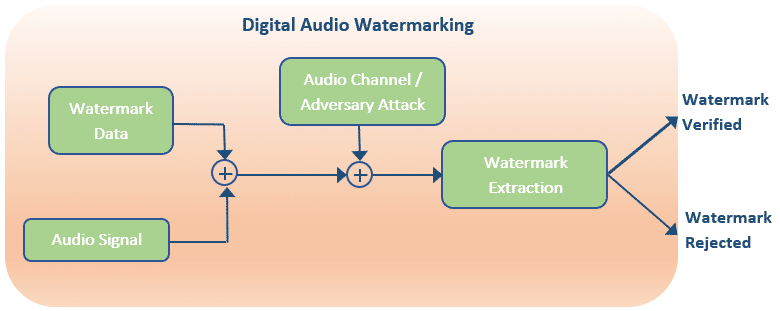Digital audio watermarking is a method to secure the copyright content of audio media. Digital audio watermarking is a method of data hiding, in which information is embedded into an audio signal, which can later be detected or extracted for verification.
Two main criteria for which a digital audio watermarking system is evaluated are imperceptibility and robustness. The embedding of the watermark into the audio signal must be imperceptible to a human listener, while being resilient to intentional and/or unintentional attacks to the system. Generally speaking, there is a compromise between imperceptibility and robustness. To make a system more robust, one must embed more information into the signal. However, more information increases the potential of distortion. An effective solution must use the knowledge of the psychoacoustics of human hearing with knowledge of how the system could be attacked.
In Psychoacoustic Effects: Masking, the masking properties of human hearing was discussed. During backward or forward masking periods, the watermark could be embedded into the audio signal and inaudible to the listeners. This approach provides great imperceptibility, but is not robust to compression. If this watermark signal is processed via audio coding algorithm, such as MP3, which uses this same knowledge to compressed the signal, then the watermark data will be unintentionally destroyed. Another option for watermarking is to embed areas of the signal that are perceptually relevant. Adversary attacks that attempt to remove the contents of the watermark will result into ruining the audio quality of the signal, making the attack futile.
Future articles will dive further into the details of time domain and transform domain-based solutions and the attacks watermarking systems faced. VOCAL Technologies, Ltd. has 35+ years experience in signal processing and can utilize this expertise to design a system to meet specific customer requirements.
